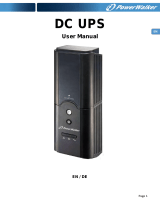Eaton IZM-CS is a cassette cell switch field option kit that allows for the easy installation of up to three cell switches into a single cassette. The kit includes everything needed for installation, including wire markers, terminal blocks, and mounting hardware. The cell switches can be placed in one or more of the three positions shown (D, T, or C), and are activated progressively as the breaker reaches the insertion position shown in Figure 1. The kit is designed for use with IZM cassette cells, and is compatible with a variety of Eaton circuit breakers.
Here are some of the features and possible use cases for the Eaton IZM-CS:
Eaton IZM-CS is a cassette cell switch field option kit that allows for the easy installation of up to three cell switches into a single cassette. The kit includes everything needed for installation, including wire markers, terminal blocks, and mounting hardware. The cell switches can be placed in one or more of the three positions shown (D, T, or C), and are activated progressively as the breaker reaches the insertion position shown in Figure 1. The kit is designed for use with IZM cassette cells, and is compatible with a variety of Eaton circuit breakers.
Here are some of the features and possible use cases for the Eaton IZM-CS:




-
 1
1
-
 2
2
-
 3
3
-
 4
4
Eaton IZM-CS Operating instructions
- Type
- Operating instructions
- This manual is also suitable for
Eaton IZM-CS is a cassette cell switch field option kit that allows for the easy installation of up to three cell switches into a single cassette. The kit includes everything needed for installation, including wire markers, terminal blocks, and mounting hardware. The cell switches can be placed in one or more of the three positions shown (D, T, or C), and are activated progressively as the breaker reaches the insertion position shown in Figure 1. The kit is designed for use with IZM cassette cells, and is compatible with a variety of Eaton circuit breakers.
Here are some of the features and possible use cases for the Eaton IZM-CS:
Ask a question and I''ll find the answer in the document
Finding information in a document is now easier with AI
in other languages
- Deutsch: Eaton IZM-CS Bedienungsanleitung
Related papers
-
Eaton IZM-PXR Operating instructions
-
Eaton IZM-PXR Operating instructions
-
Eaton IZM-SEC-TB Operating instructions
-
Eaton IZM-PXR Operating instructions
-
Eaton IZM-AS Operating instructions
-
Eaton IZM-ST Operating instructions
-
Eaton IZM-OTS Operating instructions
-
Eaton IL0131185EN: Magnum IEC and narrow frame cassette cell switch Owner's manual
-
Eaton NRX RF Instruction Leaflet
-
Eaton Power Defense PD-NF Owner's manual
Other documents
-
ABB Tmax T1 User manual
-
Morningstar SunSaver Duo User manual
-
MULTIPLEX Erweitert Wingstabi Owner's manual
-
Somfy Eolis 3 D Wirefree RTS Owner's manual
-
Spektrum AR12110 12-Channel DSMX PowerSafe Receiver User manual
-
E-flite Habu 32 EDF ARF User manual
-
Motorola CLEARTONE CM5000 Basic Service Manual
-
 PowerWalker DC UPS 12V Owner's manual
PowerWalker DC UPS 12V Owner's manual
-
VESTEL EVC04-AC11SWDA Installation Manualline
-
Tripp Lite S3M100KX, S3M120KX, S3M160KX, S3M200KX Owner's manual




